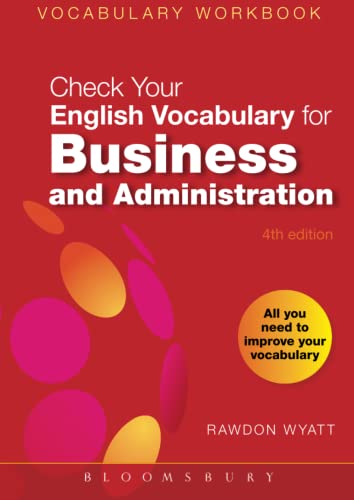Business English Lesson: Corporate Team Building. A lesson to learn how to discuss the importance of corporate team building and its benefits with free PDF.
Business English Lesson: Corporate Team Building

Business English Lesson: Corporate Team Building
Objective
Level: Intermediate to Advanced
Objective: By the end of this lesson, students will be able to discuss the importance of corporate team building and its benefits, identify different types of team building exercises, and understand the key considerations when planning team building activities
Warm-up (15 minutes):
- Begin the lesson by asking students about their experiences with team building activities. Have they participated in any team building exercises before? What were their impressions?
- Discuss with the class the importance of teamwork and collaboration in a professional setting. Ask students to share their thoughts on how effective teamwork can contribute to the success of a company.
Vocabulary building (10 minutes):
- Introduce and explain key vocabulary terms from the article: corporate team building, social cohesion, barriers, tension, efficiency, turnover, relationships, stress, trust, confidence, productivity, conflicts.
- Provide examples and encourage students to provide their own examples of each vocabulary term.
Reading Comprehension (15 minutes):
- Provide students with the article on corporate team building.
- Have students read the article individually and underline or highlight any unfamiliar words or phrases.
- Discuss the main ideas of the article as a class. Ask comprehension questions to ensure understanding:
- What is corporate team building?
- What are the benefits of team building exercises?
- What are some examples of team building exercises mentioned in the article?
- When should team building exercises be used?
Discussion and Analysis (20 minutes)
- Divide the class into small groups and assign each group a discussion topic related to team building. Possible topics include:
- The role of team building in improving communication and collaboration.
- The benefits of team building exercises on employee morale and productivity.
- The challenges and considerations when planning team building activities.
- In their groups, students should discuss the assigned topic, share their opinions, and provide examples or personal experiences to support their views.
- After the group discussions, regroup as a class and allow each group to share their main points with the rest of the class.
Case Study (20 minutes)
- Provide students with a case study of a company that implemented a successful team building activity. The case study should highlight the objectives of the activity, the specific exercises or events involved, and the positive outcomes achieved.
- Divide the class into small groups and assign each group a specific aspect of the case study to analyze (e.g., objectives, challenges faced, impact on team dynamics, measurable results).
- In their groups, students should discuss and analyze their assigned aspect of the case study, and prepare a short presentation summarizing their findings.
- Allow each group to present their analysis to the class, encouraging class discussion and reflection on the effectiveness of the team building activity presented in the case study.
Role Play Activity (20 minutes):
- Divide the class into pairs or small groups.
- Assign each group a specific team building scenario (e.g., organizing a team-building event, resolving conflicts between team members, improving communication between departments).
- In their groups, students should create a role-play based on the given scenario and act it out.
- After the role-plays, open a class discussion to reflect on the effectiveness of the team-building strategies portrayed in each scenario.
Writing Activity (15 minutes)
- Ask students to individually write a reflective essay on the importance of team building in the workplace.
- In their essays, students should explain why they believe team building is crucial for a company’s success, provide examples of team building activities or strategies they find effective, and discuss the potential benefits of team building for both employees and the organization as a whole.
- Encourage students to support their arguments with personal experiences, research, or examples from the article or case study.
- After completing their essays, students can share their thoughts with a partner or in small groups to exchange feedback and engage in a discussion about their perspectives on team building.
Wrap-up and Reflection (10 minutes)
- Lead a class discussion on the students’ overall impressions of team building and its significance in a professional setting.
- Ask students to reflect on what they have learned from the lesson and how they can apply the concepts of team building in their future careers.
Homework Assignment
Ask students to research and find a real-life example of a successful team building activity implemented by a company. They should write a short report summarizing the activity, its objectives, and the outcomes observed.
Extension Activity (20 minutes)
- Divide the class into pairs or small groups.
- Instruct each group to come up with an innovative team building activity or exercise that addresses a specific workplace challenge or goal (e.g., improving interdepartmental communication, fostering creativity and innovation, enhancing problem-solving skills).
- Students should brainstorm and outline their proposed activity, considering the objectives, logistics, and potential outcomes.
- Afterward, have each group present their innovative team building activity to the class, explaining the rationale behind their idea and how it can contribute to the overall success of a company.
- Facilitate a class discussion on the different proposals, encouraging students to provide feedback, ask questions, and engage in a constructive exchange of ideas.
Note: The teacher should adapt the lesson based on the proficiency level and needs of the students. Additional activities such as vocabulary exercises, grammar practice, or listening comprehension can be included as necessary.

Business English Lesson: Corporate Team Building
Business English Lesson: Balancing Stakeholder Management
Corporate team building –simply put- is the process of creating social bonds between employees within a company, in order to improve social cohesion within a workforce, break down social barriers between employees, ease any tensions that may have arisen, and improve overall employee happiness.
Often within a workforce, poor communication between employees can have an unnecessarily detrimental impact on efficiency. Corporate team building exercises help to create a more sociable and open environment, which not only promotes effective teamwork, but also allows employees to with an open forum to voice innovative ideas, and minimize conflict that can have a negative effect on the ability of a workforce to function properly.
Team building comes in many forms, they can include icebreaker exercises for new employees, games or tasks which involve teamwork, trust building exercises, open forums and social events. The benefits of corporate team building are numerous, and can be applied in many different ways. The positive effects of team building exercises on a business has been proven empirically; not only boosting efficiency, and reducing employee turnover, but also providing more abstract, unquantifiable benefits such as:
Building social and professional relationships
Team building exercises put employees in touch with one another in a neutral, non-competitive environment. This not only helps to forge inter-company connections and improve efficiency, but also allows employees to develop a more sociable relationship with their peers, helping to break down barriers of communication, boost camaraderie, and recognize the potential within one another.
Reducing stress
Work environments can often be stressful places, fraught with deadlines, heavy workloads and even hierarchical tensions. Stress is the enemy of productivity, clouding the mind and preventing employees from achieving their potential. Team building exercises help to diffuse tensions, and allow employees to have a little bit of fun and enjoy the company of their colleagues, whilst at the same time minimizing stress.
Building trust
It is absolutely essential that employees within a company are able to rely on one another for support, and to carry out their designated tasks efficiently. Team building exercises help employees to build up a mutually beneficial bond of trust by working together in a game, or enjoying a leisurely activity.
Building confidence
New employees may often find themselves nervous in their new environments. Many will not know their colleagues and managers, and may find themselves hesitant to approach them. This can have a negative effect on productivity and efficiency through lack of adequate communication. Team building exercises allow new colleagues to get to know one another on a personal and professional level, making it easier for them to approach them throughout their working career.
Making employees happier
Social events and team building exercises such as games can give employees a welcome break from the drudgery of work. This massively improves the overall happiness of a work force, and in turn helps to minimize employee turnover, massively saving time and effort on recruitment and training.
Resolving conflicts
Conflicts between employees can often arise, creating tension and abrasiveness and hindering productivity. In extreme cases, this can lead to dismissals, resignations and even industrial action. Corporate team building exercises can play an important role in helping to identify and diffuse conflicts before they escalate.
When should team building exercises be used?
Selecting a particular team building exercise can vary depending on a number of factors; first of all, what is the purpose of the exercise? Are you trying to build strong social relationships? Identify different strengths and weaknesses among employees? Diffuse tensions? Create an open environment for employees to voice concerns, ideas or observations? Or simply help employees to familiarize themselves with one another and make connections?
What you are trying to achieve helps to determine what kind of exercises are appropriate. Often new employees will undergo a period of training, during this time many new employees will not know one another, or the established staff with which they will be working. In these situations, it is best to set up some icebreakers. These will allow employees to introduce themselves, and also get to know a little bit about their colleagues. There are many games that are suitable for this purpose. One game (which from personal experience I have found is very enjoyable, helps to ease tension or nervousness, and build bonds between employee), involves each employee writing down three facts about themselves, two of which are true and one of which is false. The other employees then have to guess which fact is the false one. This usually results in a funny anecdotes and interesting stories, which can in turn lead to employees feeling more humanized and receptive around their colleagues. There are lots of games which are suitable, but try to avoid anything overly competitive, as this can cause people to become more isolated towards colleagues, and can hinder future cohesion between employees.
One problem that companies often have is poor communication between different departments within a business. Paradoxically, compartmentalization of jobs does help to boost efficiency, but this also creates a lack of understanding between the exact roles of each department. In some instances, this can lead to tension and “passing the buck” (in which a job is passed from department to department without resolution). It important that employees from different departments are explicitly aware of the capabilities, responsibilities and process of each other department, in order for them to work harmoniously. Team building exercises with employees from different departments not only help to break down the barriers and prevent problems and tensions from building up, but can also allow individual employees to make contacts with employees from other departments, allowing them to complete tasks with added efficiency and cohesion. There are many teambuilding exercises which can help promote harmony between departments, often it’s simply a case of letting employees from one department spend some time with those from another during work; this allows them to not only talk to employees they may not have met before, but also see exactly how they do their job. It’s not the most fun exercise, but it equips employees with the knowledge of how the business works, and helps them to make new connections in different departments.
One of the more difficult situations within a business is when there are tensions between two or more employees. Often this can come about when employees feel like others are not pulling their weight, or when personal issues have built up which lead to abrasiveness and conflict. In order to diffuse this, I have found that putting the two parties together to work on a task they both enjoy can be quite effective. Tensions can sometimes build up from the monotony of repeating the same task, which can be compounded when parties feel unhappy working with another person. Taking them out of this environment and assigning them a task which they both enjoy will not only force them to set aside their differences to complete a task, but will also give them a welcome break from their usual environment, and give them a feeling of shared accomplishment through working together, which can de-escalate rising tensions. This is usually best carried out in a neutral environment, separate from their usual work space. The new environment will help them to change their engrained attitude towards work. It is essential that when the task is assigned, that both parties are placed on an equal footing, with joint responsibility for the task.
Crucial rules of team building exercises
Setting up a team building exercise for your employees sounds easy and fun, but often people can overlook some simple but essential considerations when preparing an exercise. It’s important to consider who will be involved, what relationships they have with one another, whether they have any specific needs, and their availability. Exercises may be carried out with groups of people who are strangers to one another, people with specific psychical, religious or dietary needs, or people who may be experiencing tension with one another. Here are a few simple rules to bear in mind when planning a team building exercise:
They should have a purpose
The first thing to decide when choosing what type of team building exercise is appropriate, is to determine what the purpose of the exercise actually is. Are you looking to build professional relationships? Improve morale amongst employees? Diffuse tensions? At the end of an exercise, you should be able to see what it is that you’ve accomplished, and use this to create and refine future team building exercises.
They should not be too competitive
I know paintballing sounds like a lot of fun, but overly competitive games can often bring out the more carnal side of employees. A little but of healthy competition is fun, but setting an environment of ruthless competition can often lead to existing tensions rising, people feeling excluded, excessive bravado and dejection at losing. It’s also important to ensure that everybody has a fair chance of winning, rather than those with a physical advantage.
They should be enjoyable for everyone involved
When selecting an activity, it is important to make sure that your employees genuinely enjoy the activity, and want to get involved. For example, a game with a few rules can be a lot of fun, but an overly complicated game with too many parameters that are hard to understand can cause people to lose interest. It is essential that people do not feel like you are wasting their time, or forcing them to complete an act they view as trivial and pointless.
They should have valuable lessons or skills
Though this may seem contrary to the previous point, a good team building exercise needs to be more than a social gathering at a bar. Exercises should allow employees to use their skills to work together to complete tasks, and ultimately feel a sense of accomplishment at the end.
They should not exclude one person or group
It is very important to take into account the individual needs of each employee. There are some activities that are simply not suitable for some people. Employees with physical ailments or disabilities might not be suited for activities that involve strenuous physical activity. Parents -who need to pick up their children from school after work- might not want to travel too far for an activity. These are all things that must be considered. It is also important to avoid games, activities or events that may make one person or group feel excluded or isolated; doing so risks marginalizing employees and creating friction.

Business English Lesson: Corporate Team Building

Also check out these Business English resources












